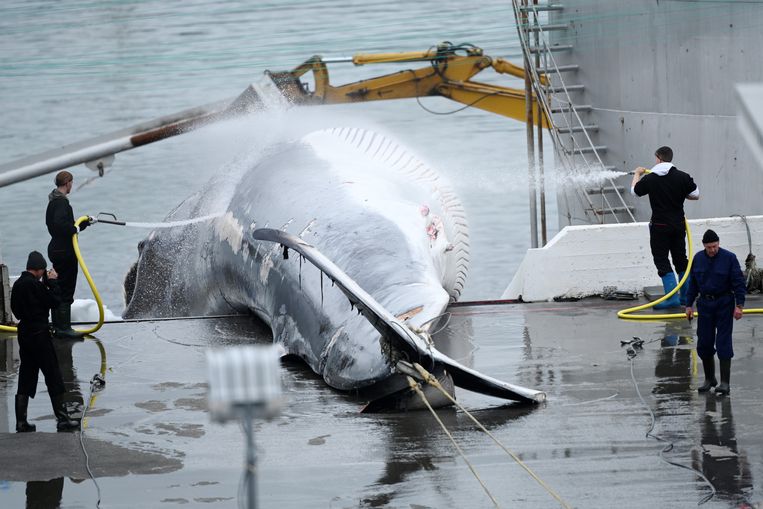In June, the Icelandic government imposed a temporary ban following a critical report from the National Animal Welfare Authority, which described that many whales were suffering unnecessarily while being hunted. Of the 148 whales captured in 2022, 36 were found to have been shot more than once before dying. The whale, with a harpoon in its body, was chased for five hours to no avail. The temporary ban was scheduled to end on Friday.
A ministerial task force recently concluded that hunting methods could be improved, which could reduce whale suffering. Stricter rules will now apply to the equipment used by hunters and the way animals are caught. The government also wants to strengthen control.
International embargo
The decision is controversial because whaling is a violation of international agreements. There has been an international ban on commercial whaling by the International Whaling Commission (IWC) since 1986. Additionally, the fin whale was declared an endangered species in 2008 and trade in fin whale products is banned in the UN CITES treaty. Iceland has negotiated an exception in both cases. In addition to Iceland, Japan and Norway allow whaling. Permit holders in Iceland receive an annual quota from the government for the number of fin and minke whales that may be killed.
Iceland reluctantly agreed to a moratorium in the 1980s, but left the IFC in 1992 when it refused to allow quotas. They joined again in 2002, but with a highly controversial warning against an indefinitely extended ban. In 2006, Iceland resumed commercial fishing and exports, despite protests and even economic sanctions imposed by the United States. Iceland is the only country in the world that hunts the endangered fin whale, which is the second largest animal on Earth after the blue whale.
The discussion is not settled yet
Fisheries Minister Svandis Svavarsdóttir showed on Thursday that the discussion on whaling is far from over. “We are the last country in the world to hunt large whales in this way and there is only one company doing it. The question is whether this is the picture we want to see.”
The controversy over whaling was also affected by declining revenues. A few big fish were caught in 2020 and 2021. In addition, demand for widely consumed Icelandic whale meat from Japan has fallen sharply because the country allowed hunting again in 2019. One Icelandic license holder gave up in 2020 because hunting was no longer profitable. The family company Hvalur is the only remaining permit holder.
Animation goes down
Whaling interferes with tourism, which is increasingly important in Iceland. Whale watching is one of the biggest tourist attractions on the island. Tour operators complain that they have to sail more and more because the whales are becoming more shy. Enthusiasm among Icelanders is also declining. In a poll conducted earlier this month, 51% of those surveyed said they were against stalking. 29% were in favor of this, including a relatively large number of those over sixty years of age.
In the 1960s, tens of thousands of whales were killed every year. After a ban imposed by the International Whaling Commission in 1986, hunting was only permitted for the purposes of scientific research and to secure the livelihoods of populations who traditionally subsisted on whales. The ban was the reason for Canada to leave the IWC. Japan did so in 2018. Norway remains a member but does not recognize the moratorium and is now the world’s largest whaler. Of the 1,315 whales caught in 2021, 577 came from Norwegians.

“Creator. Award-winning problem solver. Music evangelist. Incurable introvert.”







More Stories
British military spy satellite launched – Business AM
Alarming decline in the Caspian Sea
Lithuania begins construction of military base for German forces